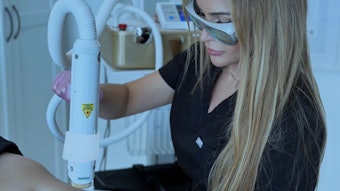
Deep Plane Facelift
The deep plane facelift, currently the most advanced facelift technique, is becoming a popular procedure among celebrities such as Marc Jacobs. This groundbreaking new technique improves upon the traditional facial rejuvenation procedure, providing more natural, longer lasting results and shorter recovery time. Facial plastic surgeon Philip Robb Jr., M.D., owner of Robb Facial Plastic Surgery in Alpharetta, Georgia and personally trained by New York City facial plastic surgeon Andrew Jacono, M.D., FACS, in his updated, streamlined and conceptualized deep plane method, discussed this advanced facelift technique, its advantages and the skills required to perform it.
Related: QMP Publishes Textbook on Deep Plane Facelift Technique
Traditional vs. Deep Plane Technique
The traditional facelift manipulates the layer of muscle under facial skin called the superficial musculoaponeurotic system (SMAS), peeling the skin away in front of the ear and placing stitches into this layer of muscle to create tension, thereby pulling the tissue away from the jawline and creating a sharper contour. The deep plane technique, as the name suggests, goes deeper into the surgical layers of the face. Rather than separate the skin from the deeper structures, the deep plane technique leaves the skin, underlying fat and SMAS attached, instead lifting the tissue from anchor points where the skin is tethered directly to the bone.
This allows the facial tissue to be moved as a whole, allowing for loose skin in the jowls, vertical bands on the neck and fullness under the chin to be elevated, creating a more sharply contoured jawline and neck. In addition, since releasing the tissue from where it is directly tethered to the bone eliminates the tension created within the rest of the connected tissue in the face, the deep plane technique allows greater release of tissue in the middle of the face, creating a more thorough lift throughout the face and a more natural looking result between the lateral areas of the eyes.
Since the deep plane technique lifts facial tissue from natural fusion points in the face, the whole tissue structure lifts cleanly without significantly disturbing any blood vessels and causing bleeding. This, in addition to the skin and deeper structures such as fat and SMAS remaining a composite unit, allows for a speedier recovery and better healing.
Related: Botulinum Toxins Effective for Post-Facelift Paralysis
Visualization of Nerves
While the deep plane method has many advantages over the traditional facelift, there are only 1.5-2% of facelift surgeons that perform a genuine deep plane facelift. The main reason for this is the difficulty with visualization using this technique. This procedure can be dangerous if performed infrequently and by a surgeon that is not adept at visualizing a precise dissection path avoiding the nerves and muscles responsible for movement in the face and smiling, in particular. The deep plane technique cannot be performed without this ability to visualize the location of the nerves, as the surgeon must actively protect them from being harmed during the procedure. As this is a precaution that is not always taken when performing a traditional facelift, an advanced double board-certified facial plastic surgeon such as Robb with his unique training in the deep plane method is necessary to achieve the optimum results with a complication rate comparable or even less than those of traditional facelift methods.











